Alderman-at-Large |
|||
By George P. Hassett Twelve new firefighters were added to the city's fire department this week. The Each new firefighter was sworn Ward 1 Alderman Bill Roche said most of the new hires were from Somerville. The new hires were made possible by an $843,000 grant from the U.S. Department of Homeland Security. "The In another matter, aldermen also promoted four veteran firefighters Thursday. Wallace Forrest was promoted to captain, and John Colbert, Vincent Lampley, and Thomas Tierney were promoted to lieutenant. "I've |
||||
| |
|||||
Artist building opens its doors Nov. 22 and 23 By Julia Fairclough Charles All three artists Brickbottom, together with Joy "I'm Baldwin, who moved into Brickbottom three years This It's The "The people Half of the original |
|||||
Restaurant wants its hours back By George P. Hassett A Ward 6 Alderman Rebekah Gewirtz said Bruce For "I never had a hassle from the police or City After On Thursday, Gewirtz advocated for extended hours "As the Ward 6 alderman, I Other "We're setting standards for a citywide policy," Desmond said. "We're trying to be fair and equitable across the board." Gewirtz pointed out that Moe's BBQ Trolley is allowed to serve food until 3 a.m. on Professors Row near Tufts. Other Ward Gewirtz |
||||
By Patrick Connolly As As part of the "This dedication Although the concourse formerly memorialized all veterans, Fedele also served in the armed service. "He Curtatone said. "Dedication to country, sacrifice to community, Tony Fedele embodied it all." When "Good "By that definition, Tony Fedele was a great teacher." The speakers at the ceremony emphasized Fedele's way of mentoring students and colleagues throughout their lives. "He Fedele, friends "I believe this sign, although a At times, Fedele left "The Now, Fedele's commitment to the community will not only be remembered. It will be set in stone. Well, metal to be exact. "His legacy will live on," Curtatone said. |
||||||
By Doug Holder On Nov. 22 at 6:30 p.m. at the Somerville News Writers Festival, author A.C. Kemp will bring her bag of barbs to the stage. Kemp is a lecturer in English Language Studies at MIT. Her book "The Perfect Insult for Every Occasion" was released to rave reviews in March. In it, Kemp's alter ego, Lady Snark, holds court on how best to destroy foes with simple words. I caught up to her recently for an interview. I am happy to report that she didn't insult me. Doug Holder: Who, in your opinion, are the great insulters of the literati, be it authors or their characters? I can think of Dorothy Parker offhand…probably a lot of the guys and gals at the Roundtable for instance…. A.C. Kemp: Most definitely Dorothy Parker! People get excited about Shakespearian insults, but they make you sound more pretentious than funny. In Hamlet, you've got lines like "it offends me to the soul to hear a robustious periwig-pated fellow tear a passion to tatters" about bad actors. Parker's critique of Katherine Hepburn–"She runs the gamut of emotions from A to B"–has more punch. Plus, Parker shared many of Lady Snark's favorite hobbies, like drinking and sleeping with married men. DH: Miss Snark, seen on the front cover of your book, your alter ego, seems like the perfect purveyor of your perspective. I wonder — is "snark" a slang word? Is she a sort of a cold roast Brahmin, who is having a bad hair day? Kemp: Definitely not a Brahmin. Lady Snark was born in Gackle, North Dakota. She ran away from home as a teenager, worked as an exotic dancer, then moved to Paris to start the long, slow process of marrying up. As for snark, it's not slang. It seems like a newish word, but it's well over a hundred years old and was even used before Lewis Carroll's "Hunting of the Snark" poem. It comes from the even better word snork, meaning to grunt or snort. I think we should reintroduce that one, because I'd love to say, "stop being so snorky!" DH: How is the quality of insults in Somerville? Kemp: Average, but of course, I'm limited to the sample of people who have insulted me. There may be very creative insulters outside my circle of enemies. DH: Do you think McCain and Obama are good at this art of mudslinging? Kemp: Not really. "Palling around with terrorists" is pretty lame. I was kind of hoping for some snaps in the debates, like "Your mama is so dumb she flunked out of the Electoral College"-that sort of thing. DH: You are a scholar of slang and you founded the website slangcity.com. This developed from a course you taught ESL students. Do you think when we are taught foreign languages in school, slang should be an important component as well? I remember only being taught in language labs stuff like: "In the evening we dress in our colorful native costumes and dance and sing with other idealistic youth." Real people don't talk that away… Kemp: I definitely think language students need more slang if they plan to spend any time in a country where the language is spoken. That's why I started teaching the slang class. If you don't know slang or even idioms, it's very hard to fit in, and you can get yourself in trouble by not understanding that you're being propositioned, threatened or invited to do something illegal. I had a straight student once who didn't realize, because of language and culture differences, that he was being hit on by a guy until he was at the guy's house. DH: You teach at MIT. Across the hall is Junot Diaz. He is our featured reader in The Somerville News Writers Festival that you are a part of. What slang verbiage might you use to congratulate him on his Pulitzer? Kemp: Actually, Junot is upstairs from me, but I'd just say "Congratulations!" I'm much more creative at being mean than nice.
The anchor of my purest thoughts, the nurse, The guide, the guardian of my heart, and soul Of all my moral being." — William Wordsworth In the Walking It will happen like this for many of you, the house suddenly too much, the garden so full you go out, maybe thinking of the way the earth gives under your feet, the water makes circles around them if you have to cross a river, leaves and branches lift up and then brush against you when you have crossed, these things or the very structure of things, the making of the hip joint, electrical plots in the heart, thalamus sending reminders to the moving, you looking up into the still wings of gliding crows on this day when you know in one second there is the power to give things new names, so you decide this is not leaving but returning, that ends are middles or that there are no points, no time, so by the time you are miles away from leaving it is only the eternal very first moment of anything, making a pound cake from scratch, moving your hand across the hem of a new skirt, the slight fear and tremble when a sudden sound hits your wall, like children throwing the ball against the fire escape until it rattles like an empty skeleton, the hot shower where you are alone until the memories step in with you, deep solitude of living alone, falling to where you are connected with everything, and it happens, the stepping out, mind full of seeing yourself move out into the world without difference so you can see every move you make is a change in the current, the arrangement of patterns under a brush, a twisted calligrapher's stroke, all these things, walking while the bones of who you are become roots. Afaa Michael Weaver previously published in American Poetry Review *Afaa Michael Weaver is the author of "Plum Flower Dance" ( UPITT/PRESS) |
|||
In The city recently installed solar "We "The
|
|||
| |
||||
Activists and officials angered as state sticks to plan By Jack Nicas The And local activists and officials are not happy. "Unless In a recently released report At Wednesday's Green "It Mackey tried to illustrate the transit office's bias "The only time you The Transit Of the ten, engineers whittled the options down to three possible plans: "Scheme The city-proposed plan, "Scheme J," would not use Yard The If "What struck The state transit office could not be reached for comment. The Some Advisory Group members requested the presence The next Green Line Advisory Group meeting is "We're not saying get out of our backyard," Mackey said, "but at least work with us in the part of our backyard you use." |
||||
Pulitzer-winner Diaz to read at Nov. 22 Writer's Fest By George P. Hassett Junot Diaz is local. His stories exist in 1990s New Jersey, but half the year he's writing in Central Square ("constructing sentences and scenes in my head") or eating in Merengue Restaurant on Blue Hill Avenue ("Best Dominican food in the whole region and the one place I truly feel home in," he says). In "Drown" and "The Brief Wondrous Life of Oscar Wao" Diaz tells stories of immigrants, ghetto nerds, overworked fathers and virgin Casanovas almost exclusively from two locales: his exotic memories of the Dominican Republic and the bleak inner suburbs of New Jersey (with occasional side trips to Washington Heights). He says he has never written about Boston. The 39-year-old acclaimed author, however, teaches at MIT, lives in Cambridge six months of the year and credits the area with giving him "the quiet and the resources and the exile" he needed to finish his debut novel, "The Brief Wondrous Life of Oscar Wao" which won the Pulitzer Prize for fiction this year. Diaz said he moved to Cambridge in January 2003 "with only pieces of a novel." Five years later, he's a rock star in the literary world thanks to the sentences he builds in his head (and sometimes writes on his hand). On Nov. 22, Diaz will head to the VFW Dilboy Post on Summer Street to headline The Somerville News Writer's Festival. It's an anticipated neighborhood appearance for an author with worldwide prestige. The Somerville News spoke with Diaz, via email, this week about how a Dominican-born, Jersey-raised boy survives in Cambridge and Boston. Somerville News: Why did you choose to teach at MIT and live in Cambridge? Junot Diaz: Cambridge was an easy choice. It has the bookstores! I live about a hundred feet from Harvard Books. I'm a Jersey boy which means that I spent almost every day inside of a car growing up so can you imagine the pleasure it is for me just to walk places? Cambridge allows me to walk to work, to walk to eat, to walk everywhere. MIT recruited me in a way. Anita Desai, genius writer extraordinaire, really pushed for me to apply for the job and once I met the students and my colleagues in the program in writing it was a wrap. I didn't want to be anywhere else. SN:Has living in Cambridge changed any of your previous perceptions of the area? My best friends in this whole area are Dominican and Puerto Rican folks who grew up in and around Central Square, part of a people of color community that is vibrant and beautiful and almost entirely erased by the twin universities that dominate Cambridge. Never knew anything about this community until I moved to Cambridge. SN:Do you think of Cambridge as a white city? Cambridge is definitely a white city to me. For all its positive political activity, for all its diversity I don't see this radical bit of New England as very hospitable to poor folks of color. Look: it's not how individual folks of color are treated but how their COMMUNITIES are treated. And at a community level this is not the best place to be a poor kid of black and Latino descent. This is a hard thing to be anywhere but in Cambridge it's particularly frustrating. I live on Harvard Square, I see how well treated the tourists are and yet how the brown kids from Central Square get followed in stores, are stared at by people, are made to feel unwelcome in a thousand different ways. I see how Harvard and MIT both benefit from Cambridge and yet how Rindge and Latin, the only public high school in town, within a stone's throw of both institutions, languishes (despite the many sacrifices of its teachers.) I see how the public space of Cambridge is still white dominated. I've communicated these observations to Cambridge people and they're like: oh no! that's not true. It's never folks who live in a place all their lives who see its problems clearly. It's the outsiders. But if you don't believe the texture of my observations just look at the fact that neither Cambridge nor Boston does a good job of retaining blacks and Latinos who come to study in the local colleges at all! If that's not a sign that something is afoot I don't know what is. Cambridge has a lot of things going for it, a lot of beautiful progressive people, wonderful community organizations but in racial terms it ain't nowhere near as safe a space for me as New York City or New Jersey. Both these are super-messed up in so many ways but they don't suffer from New England whiteness. But just because I have criticisms of a place doesn't mean I don't appreciate all the things Cambridge/Boston does well. You level criticisms because you want a place to improve, not because you want to tear it down. It's those people who have no criticisms who I'm scared of. They're the ones who are happy with the status quo and unless your address is HEAVEN there is no status quo on our planet that I believe needs protecting. SN:In the "Brief Wondrous Life of Oscar Wao" a Dominican-American family is haunted for generations by Fuku Americanus, the Curse and the Doom of the New World, first unleashed by the arrival of Europeans on Hispaniola. Fuku haunts an entire world and repeatedly foils the dreams of its people. Did you ever witness Fuku around Boston? Yes, it's called Fuk√∫ New Englandus. The whole area afflicted by a particularly nasty brand of white supremacy, of white exceptionalism, of white insularity that continuously haunts the area despite all pretensions to culture, to art, to diversity, to scholarship. Civil Rights and immigration never did fully arrive (penetrate for lack of a better word) and the place has suffered for it. SN:When did you start writing on your hand? Since I was little. Never did mind using my hand as paper. Seems completely natural to me. We're all someone's blank sheet of paper, at one time or another; might as well be our own. |
||||

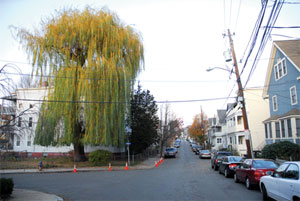
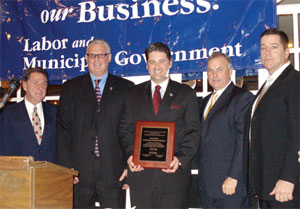
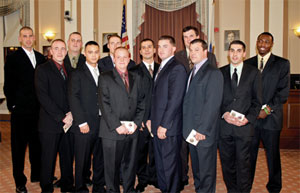



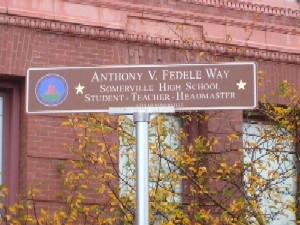
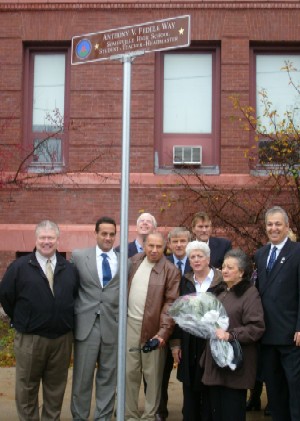
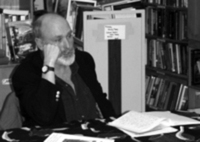

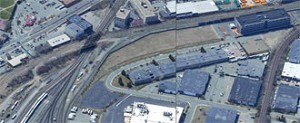
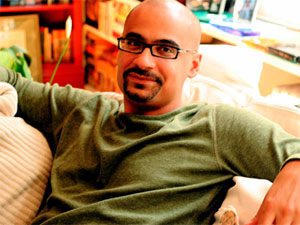














Reader Comments